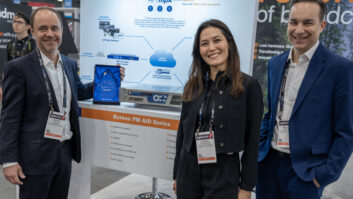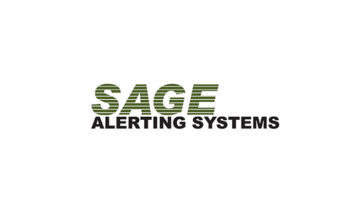Whether or if the radio industry will select one surround sound technology to coincide with HD Radio is still very much in flux.
The National Radio Systems Committee – the standards-setting group co-sponsored by NAB and the Consumer Electronics Association – has yet to determine whether it will choose a surround system to recommend for use with HD Radio; it is still in the early stages of studying them. After the convention, members scheduled a May 9 demo with all surround sound participants. NRSC Chairman Charlie Morgan and others stressed the event was not intended to be a “shoot-out.”
But surround sound was a hot topic at the convention, at demos in the 5.1 Pavilion on the exhibit floor and in session panels.
Representatives for companies adapting their technologies for digital radio peppered each other with sharp questions during “Surround Sound – A New Frontier for Radio.” Proponents from Omnia Audio, SRS Labs, Coding Technologies and Neural Audio discussed the pros and cons of matrixed, or non-discrete, channels vs. non-matrixed – discrete or separate channel – surround sound systems.
Ibiquity had just certified Dolby’s Pro Logic II system as compatible with its HD Radio technology and thus its representatives were not on the panel. However, the NRSC will now include Dolby in its surround task group.
The NRSC is also looking at the systems offered by the proponents who spoke.
Independent verification
Omnia President Frank Foti said surround is a great application for HD Radio and can drive consumer adoption. He said terrestrial radio is under attack from other media, such as satellite radio and iPods, and broadcasters need to act on surround sound.
“Please let’s not let FM radio become a media backwater,” Foti said.
When asked what happens with his system if something goes wrong, Foti said it drops back to stereo.
He said independent testing of all surround systems is important, and vigorously questioned the other panelists about the testing done on their systems.
“We’re fooling ourselves if we say, ‘We’ve done a bunch of Grammy nominations (in surround sound) and we’re done,'” he said.
Neural Audio subsequently issued an announcement that Dr. Schuyler Quackenbush had led an independent test effort of its system. Quackenbush is president of Audio Research Labs and chairman of the MPEG audio subgroup that led the test efforts.
Coding Technologies developed Spectral Band Replication, which Vice President and General Manager of U.S. Operations David Frerichs said “approximately doubles the efficiency of audio codecs.” SBR is used in the Ibiquity Digital HDC codec for HD Radio.
Frerichs said the MPEG parametric sound is going to become part of MPEG-4, an open standard. “The goal of the MPEG surround system is to accurately replicate sound.”
He said broadcasters need a surround system that will address today’s FM needs, but can also be used with streaming and other uses beyond HD Radio down the road.
Robert Reams, chief technology officer, co-founder and chief scientist for Neural Audio, told attendees that 5.1 content is scarce, so broadcasters need to think about how they would both upmix and downmix audio from stereo to 5.1 and back again.
Storage of 5.1 content in automation systems is also something for broadcasters to think about, he said, noting he saw three products at the show that can store 5.1 content as a WAV file.
Bandwidth issues
Reams and Frerichs said their systems underwent so-called MUSHRA testing, a form of detailed analysis by independent experts.
Alan Kraemer, executive vice president of technology and business development for SRS Labs, which developed Circle Surround technology, said the marketplace is already forcing a choice in surround sound systems.
“We have moved past the AM stereo era,” he said, referring to the technology that most experts agree failed to catch on with consumers because no single system was agreed upon by the industry.
Consumer electronics manufacturers such as Yamaha, Kenwood, Fujitsu 10 and Eclipse have adopted surround sound systems, he said. Auto manufacturers such as Honda are expected to add surround to their receiver offerings soon.
A lot of surround systems are touted as being discrete but are not, Kraemer said. “Parametric systems provide incremental improvements over pure matrixed systems but they require infrastructure changes. No truly discrete system is practical due to bandwidth limitations.”
In the automotive environment, the SRS system compensates for non-optimal speaker location, as the acoustic perspective of listeners changes depending on where they are sitting, he said.




